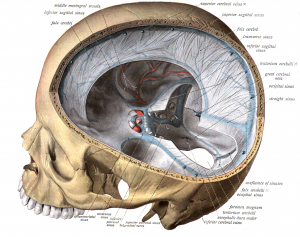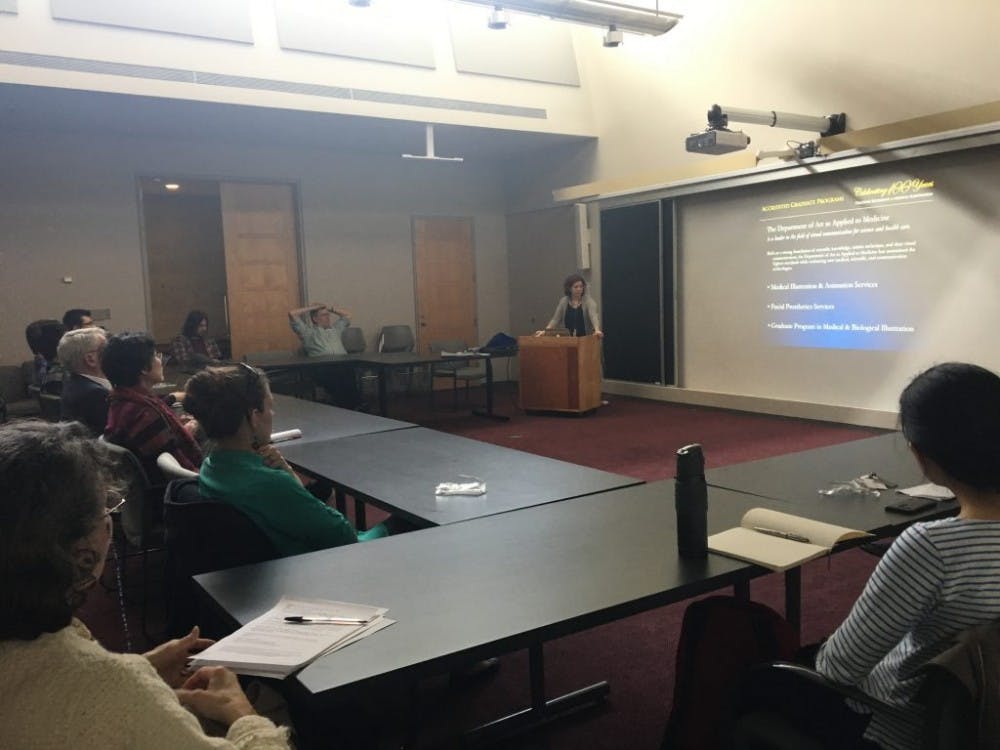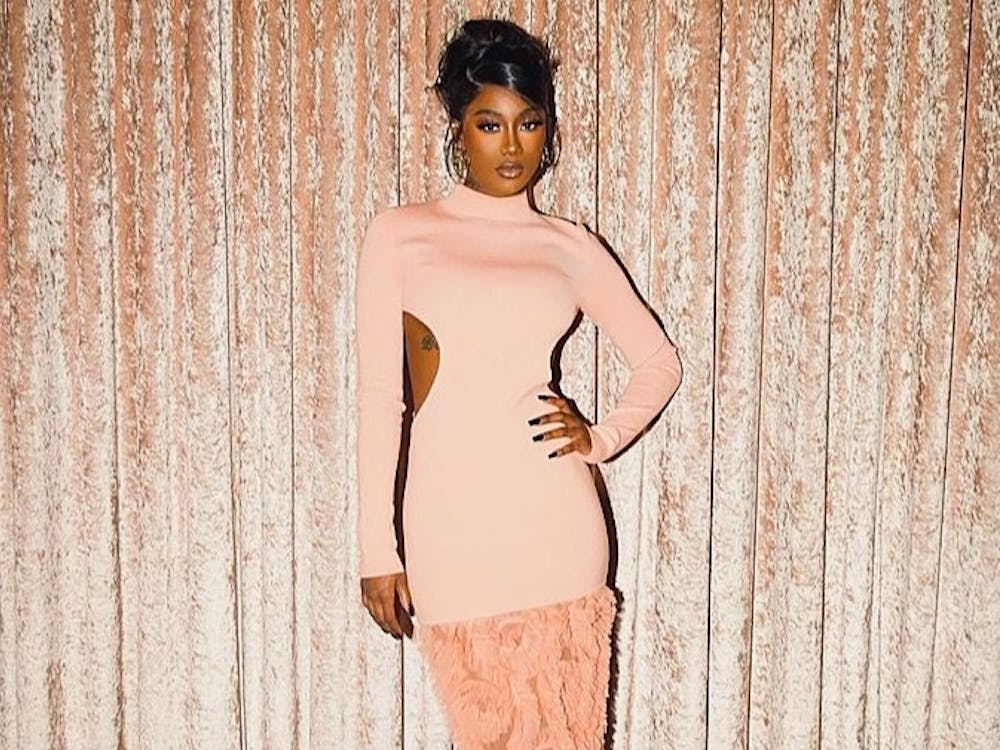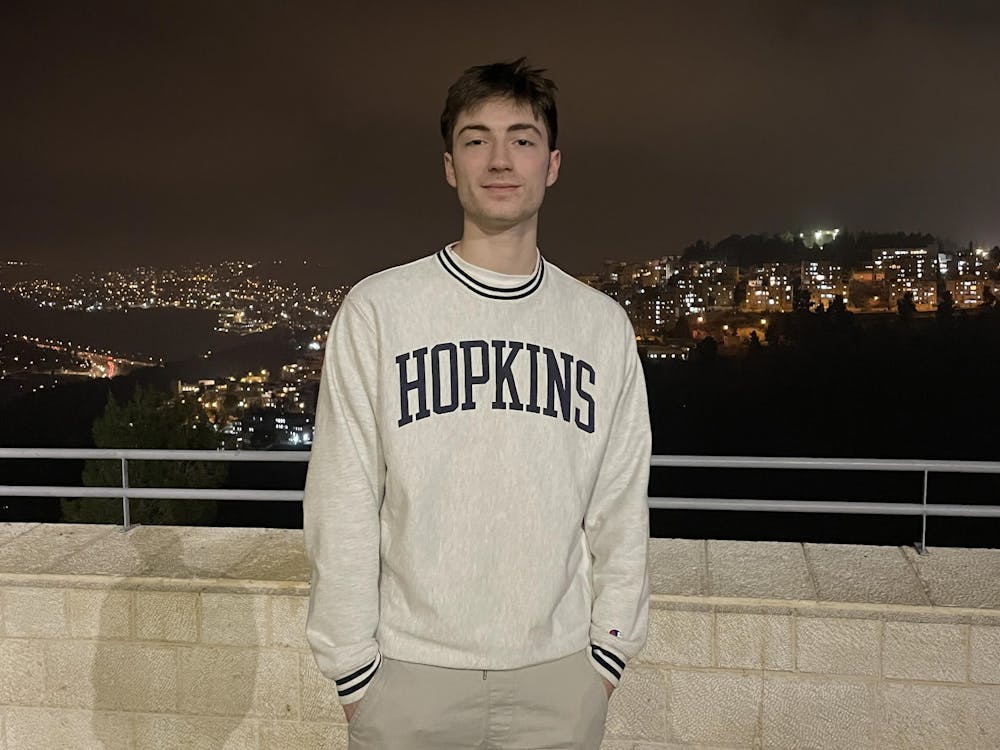Jennifer Fairman, associate professor at the Department of Art as Applied to Medicine, spoke about the role of art in medical practices in the Bloomberg Center on Wednesday as part of the weekly JHU Visualization Discussion Group lecture.
Fairman explained the purpose of her work involving medical illustration.
According to Fairman, medical illustrators are artists with a background in both science and visual art who create drawings that both explain and depict scientific information.
An example of this sort of art would be a drawing of an anatomical structure, such as a skull. She explained how their illustrations are rooted deeply in accurate scientific observations.
“Our illustrations can be thought of as art that teaches,” she said. “We provide medical illustration and design services to the community, which consists of medical and biological illustration. We’ll go to the [operating room] and observe surgery and illustrate surgical procedures.”
Before coming to Hopkins, Fairman worked as a science illustrator at the Smithsonian National Museum of Natural History. She is the founder of her own biological visual communication services, Fairman Studios.
“We put together medical illustration and animation services for the community, for researchers, and for patient education,” Fairman said.
Fairman also provided background history on the Department of Art as Applied to Medicine, which is a part of the Hopkins medical campus.

“Our department started with Max Brödel, who came from Germany when medical school was being founded,” Fairman said. “What he did was visualize medical procedures that you can’t take a picture of.”
She continued to explain that the Department of Art as Applied to Medicine offers a two-year graduate program as well as offering illustration services for researchers in the community.
Throughout her talk, Fairman displayed a portfolio of illustrations that ranged from instructions for surgical procedures to science magazine covers.
She continued to present some of her work and the processes that went behind each of her pieces.
Fairman described an infographic on genetics she created for the Bloomberg School of Public Health.
“This particular piece took eight weeks,” Fairman said. “I would say that it took about six weeks to research, and two weeks to illustrate.”
She explained that creating these illustrations was a very collaborative effort with scientists and researchers.
One illustration she did for the process of malaria, for example, consisted of collaboration with two different researchers.
“One scientist specialized in the mosquito stage, while another specialized in the blood stage,” she said.
In contrast, another illustration she had done for a magazine involved collaborations with 12 scientists, an art director and the editor of the magazine.
“It’s interesting to see that scientists specialize in so many different fields of study,” she said.
Fairman explained the tools that she and her students use to create these illustrations.
“Many of our graduate students like to use iPads. It’s more sterile than bringing pencils and erasers into surgical rooms.”
Other times, Fairman prefers to use a tablet with a stylist.
For some sketches she draws them by hand and then scans them into a digital format.
In creating medical illustrations, Fairman explained that accuracy is the most important. This applies especially to animations for surgical procedures.
“Accuracy is more important than aesthetics in our illustrations,” she said.
Some of her illustrations, such as one that z-ring of a bacterium, required a large amount of data from a protein data bank.
Other illustrations, such as those used for science grant proposals, were more simplified.
“It’s also important to know who your audience is, and it’s important not to overcomplicate things,” she said.
Fairman advised undergraduate students to keep an open mind when pursuing their goals, because career plans could change at any moment. Like many students at Hopkins, Fairman was interested in going to medical school.
“Keep an open mind. Thinking back to when I was in college, my path was convoluted,” she said. “I was interested in going to medicine and pediatrics, but I was always interested in art. I never put the two together until I happened upon this profession by accident. When I discovered it, I knew I wanted to do it.”
Fairman advises students to continue to pursue what intrigues them.
“Take advantage of things that interest you the most. Opportunity begets opportunity. Go to lectures and clubs that have to do with the area of study you’re interested in,” she said. “And most importantly, never cease your desire to learn every day.”























Please note All comments are eligible for publication in The News-Letter.